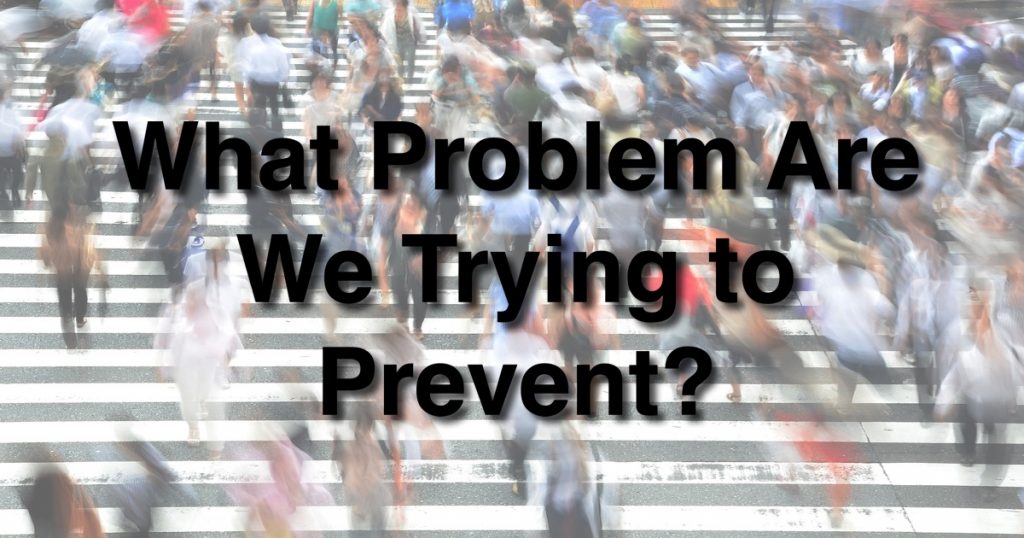Anyone that knows me is familiar with the question, “what problem are we trying to solve?” Whether it’s about the problem, or opportunity to capture, the point of asking that early in any discussion is to get folks off of thinking about solution and first onto why. In this post, I will open up a new perspective to challenge your thinking further.
One day I was reading an article from the local newspaper talking about some $2+ million project options to solve a problem that did not yet exist. Can you guess what my first question was as I began to read the article? Yep, you guessed it, “what problem are we trying to solve?” In fact, I smiled when someone was quoted in the article basically asking the same thing. But, was that the right question for me to ask?
Let me give you some background on this non-existent problem the city was trying to solve, and then tie it back into the world we work in.
Solving a Non-Existent Problem
Winchester, Virginia has an outdoor walking mall downtown. A few cities have them, where several blocks of a street are closed to vehicle traffic and the section is lined with shops and restaurants. The mid-point of the mall has a single lane, one-way road that passes through it. Sounds dangerous, right? Maybe. The article cited that there was one pedestrian incident that anyone could remember, or have any data to support. In other words, there wasn’t an existing problem to solve, per any data. Yet there were expensive proposals on the table, which included closing the street, a travel path that has existed longer than my lifetime.
Naturally, the folks are wondering why the city would spend $2+ million dollars to address a problem that does not currently exist, nor has it ever been a problem, according to sources. Selling prevention, based on what “could” happen, is hard. I don’t care one way or another what the city does – that’s not the point of this blog. I do like to find parallels to business and product development in everything I come across. So…I started thinking…
What is an Ounce of Prevention Worth?
What in product development is similar to this story? Having data certainly supports whether or not you have a problem or opportunity, and how big it is. What then, warrants priority despite a lack of data, despite being a non-existent problem?
Your mind has likely already gone here, but do we want to actually have a lot of pedestrian incident data to validate a problem exists that needs solved? I would think not. Ideally, we never have such data to suggest there is a problem at all. This means the question is, what problem are we trying to prevent, or what risk are we trying to avoid?
What is the parallel in software product development? Perhaps security. We certainly do not want historical data to suggest we have a problem with data breaches, right? Of course not, so we proactively try to stay out in front of those risks. Rather than ask what problem we are solving, or opportunity we are capturing, we ask, what could happen if we do not do this or that? This is about selling risk avoidance rather than tangible outcomes. Does that make its way onto your product backlog? How do you react to such requests?
Coming Full Circle
So, we now have a new question to ask, “what risk are we trying to avoid?” Really, though, it’s still “what problem are we trying to solve?” The point of harping on that single question isn’t about being literal to a “problem” per se, but to refocus the mind away from solution-first thinking and onto why. Data helps validate problems or opportunities exist, and sometimes the lack of data validates you’re doing a good job avoiding certain risks. It’s hard to quantify, but sometimes no data means success. It’s all perspective. Understanding the why is the key, because while what you do matters, why you do it matters more.
